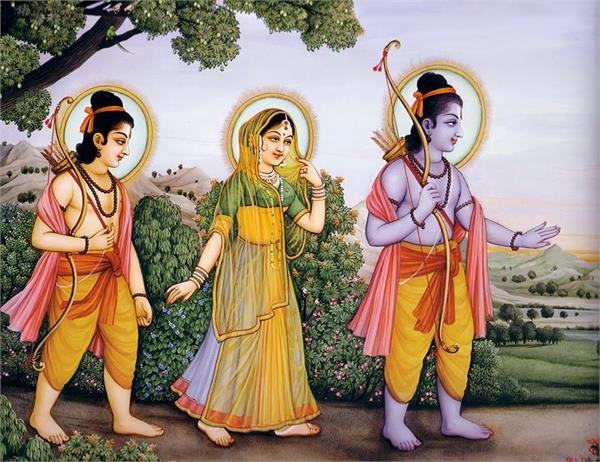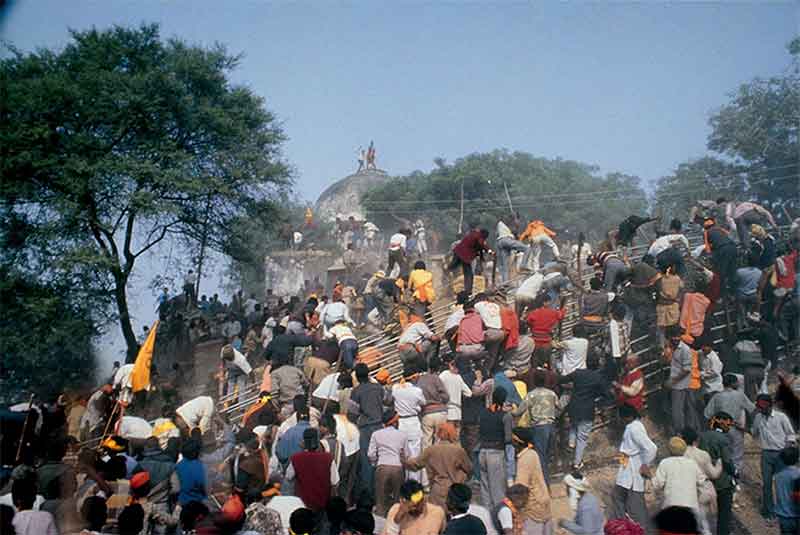
It is interesting to observe that the Ram temple in Ayodhya is being inaugurated with the installation of an idol of Ram in the form of a five-year old child, fondly worshipped as Ram-Lalla. Why are the champions of the Ram temple movement harking back to Ram’s childhood days in Ayodhya, instead of invoking his stories of sacrifice during his exile, and his later return to Ayodhya as a king, when he was credited to have brought about Ram Rajya ?
In order to understand the Sangh Parivar’s selective choice of Ram’s childhood, we have to go back to Valmiki’s Ramayana. The early chapters of the epic describe the days of innocence that the child Rama spent in Ayodhya, the later chapter Ayodhya Kanda narrates his trials and tribulations during his exile from Ayodhya, and the final chapter Uttra Kanda is devoted to a detailed description of his daily routine as a ruler in Ayodhya after his return. Both these chapters are a source of discomfort for the Sangh Parivar and they do not suit their present agenda of Hindutva.
Ram’s living habits as an exile
How did Ram, Sita and Lakshman, hungry for food, survive in the forests during their exile ? In Ayodhya Kanda, Valmiki gives a vivid description of their choice of meals :
“Toutatra hatya chaturo mahamrigam/ Barahamrishayan prishatang maharurum/
Adaya medhyam taritam bubhikshitou/ Basaye kale jajatur banashpatim”
(Out of hunger, there and then, they killed four specimens of large animals, wild boar, white-footed antelope, spotted dear…and immediately ate the meat ). (Sarga 52, verse 102)
Even earlier, before their return to Ayodhya, Sita made a pledge to a goddess:
“Sura ghata sahasrena, mangshobhutou danena cha jackshey twang prayeta devi
puring punarupagata.”
(O Devi, after my return to Ayodhya, purified by my austerities, I shall worship you by offering a thousand pots of spirituous liquor and food in the form of meat). (Sarga 52, verse 89).
It is quite obvious why the Sangh Parivar and the Hindu clergy want to suppress this period of Ram’s exile in their interpretation of Ram’s life, while consecrating the Ram temple in his name. The Ayodhya Kanda narrative is in total contradiction of their campaign against meat-eating and lynching of meat-sellers. They dare not recall this episode as it is too embarrassing for them, They prefer to retreat to Ram’s childhood.
Ram as the king of Ayodhya
Let us take a look at Rama’s performance as a ruler, after he returned to Ayodhya. One of his first acts that was hailed by his upper caste followers was his cutting off the head of Shambuka, a Shudra among his subjects. As narrated by Valmiki, a Brahmin boy died in his kingdom, and his father approached Ram complaining that the premature death of his son must have been due to a sin committed by someone within his realm. So, Ram mounted his aerial car, scouring the country searching for the sinner, until he reached a forest where he spotted a man practicing Tapasya (worshipping with rigorous austere rituals). Stepping down from his aerial car, Ram asked him who he was. The man told him that he was Shambuka, a Shudra who was practicing Tapasya to attain divine qualities in his mortal body and conquer heaven after his death. Enraged by a Shudra’s daring to practice Tapasya (which was the right of the upper castes only), Ram unsheathed his sword and cut off his head. Lo and behold, at that very moment, the dead Brahmin boy became alive. (Re: Uttra Kand. Sarga 76). Thus, Ram punished a Shudra for breaking the laws that governed caste hierarchy.
Now, can this act of Ram as the king of Ayodhya serve the purpose of Narendra Modi ? Being an OBC, he is considered a Shudra – a descendant of Shambuka. It is better for him therefore to ignore this episode of the Ramayana and skip back instead to the non-controversial innocuous stories of Ram as a frolicking child.
Ram’s frolics as a king
Some other acts of Ram in his adult age during his rule in Ayodhya, as described in Ramayana, may also be uncomfortable for Narendra Modi and the Sangh Parivar, who are trying to project him as the creator of Ram Rajya while consecrating a temple in his name. Uttra Kanda for instance, describes the entertainments that the king Ram indulged in when he took off from his official duties and religious obligations, and spent time in his garden Ashoka Vihar. This garden reverberated with the sounds of “kokilair, bhrngarajaisca, nana varnaisca pakshibhih… (kokils, bhringarajas and other birds of various plumages…).” Here he took Sita by the hand and “gave her delicious wine … whilst troops of nymphs …intoxicated with wine danced …and Ram delighted those ravishing and charming women..” (Re: English translation of Valmiki’s Ramayana by Hari Prasad Shastri. 1952).
Surely, such a record of King Ram’s frolics in public does not fit into the agenda of the Sangh Parivar and their moral code of strict insistence on brahmacharya to be followed by their members. Members of the Parivar, Narendra Modi amongst them being the most faithful adherent of that code, therefore want to escape from the compulsion to explain this part of Ram’s life which defies all the puritanical norms that are being imposed by the Sangh Parivar in the name of Ram. The escape route is only by reviving the image of Ram Lalla – the innocent baby Ram.
Narendra Modi trapped in his own mendacity.
But while trying to bolster up his image as a champion of Hindutva by presiding over the consecration of Ram Mandir and following the usual Brahminical rituals, Narendra Modi is caught up in a contradictory situation. During election campaigns, he had been projecting himself as a representative of the downtrodden backward castes, a victim of upper caste discrimination by harping constantly on his past days as a `chai-wala.’ Now he is placating the same upper caste elite by patronizing the opening of a temple dedicated to their god.
Despite his efforts, Modi however has not yet been able to sneak up his way into the favours of the Brahmin clergy. The four Shankaracharyas – the supreme heads of the various peeths (centres) venerated by Hindu devotees – are reported to have decided to boycott the `pran pratteshtha’ ceremony at Ayodhya on January 22, on various grounds. One of them complained that it was being done before the completion of the temple construction, thus violating the rules of the Hindu scriptures. Another Shankaracharya expressed disgust at the prospect of watching Modi, a Shudra, touching the idol of Ram. He felt the ceremony was more a desecration than consecration. Incidentally, all these objections stem from the same upper caste prejudices against the lower castes – thus revealing the deep cleavage in Hindu religious system.
After being snubbed by these seers of the Hindu clerical order, Modi now has to reinforce his image as a champion of Hindutva among the upper caste people by projecting himself as more Brahminical than the Brahmins themselves, as a more fanatical devotee of Ram than the Hindu priests. At the same time, he has to retain his OBC constituency, members of which are victims of casteist discrimination and lynching by the upper caste landed gentry in the same BJP-ruled Uttar Pradesh, where in Ayodhya he is to inaugurate the opening of Ram Mandir. Let us see how he reconciles these contradictory compulsions in the coming months on the eve of the Lok Sabha election.
Sumanta Banerjee is a political commentator and writer, is the author of In The Wake of Naxalbari’ (1980 and 2008); The Parlour and the Streets: Elite and Popular Culture in Nineteenth Century Calcutta (1989) and ‘Memoirs of Roads: Calcutta from Colonial Urbanization to Global Modernization.’ (2016).














































